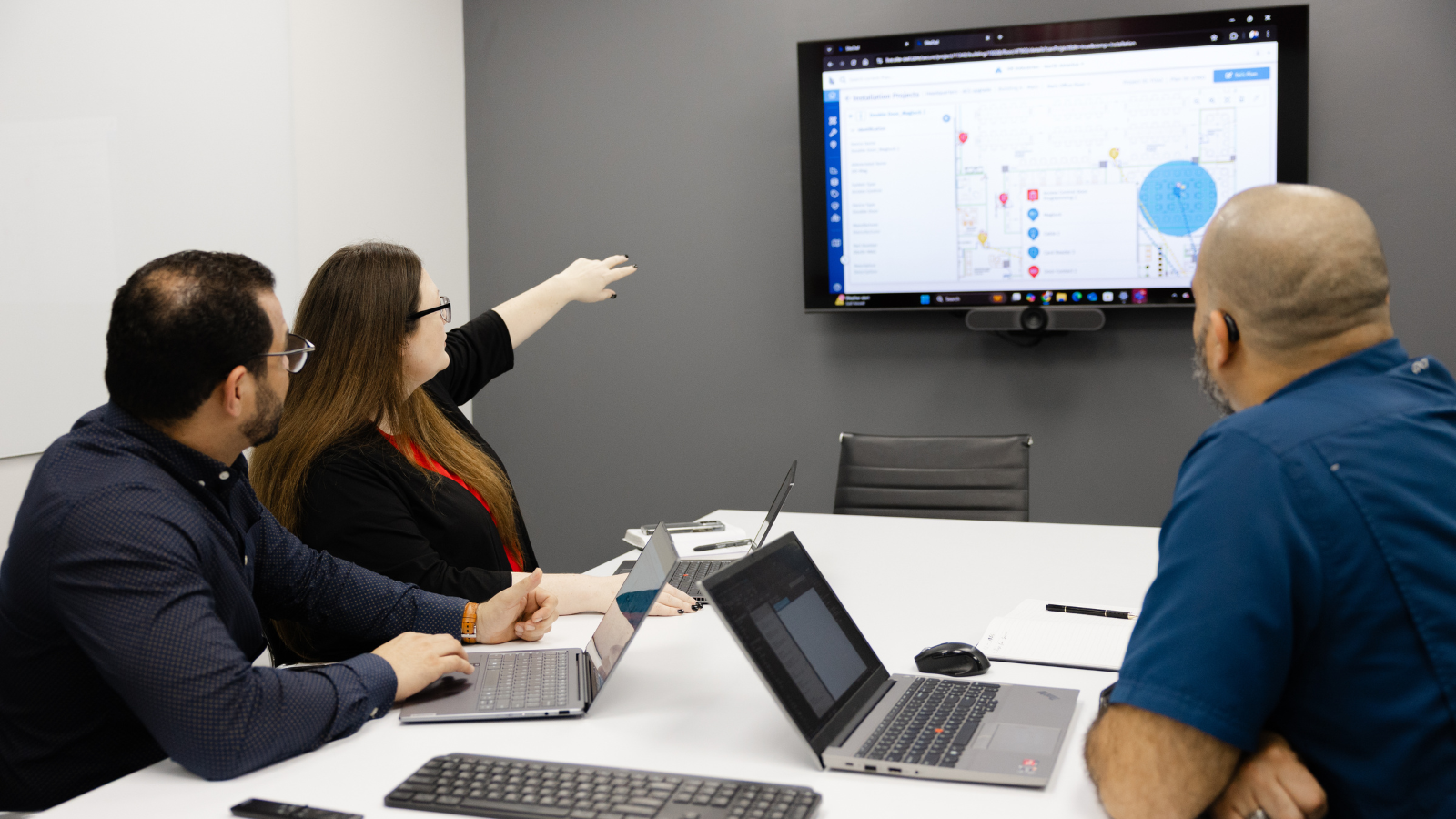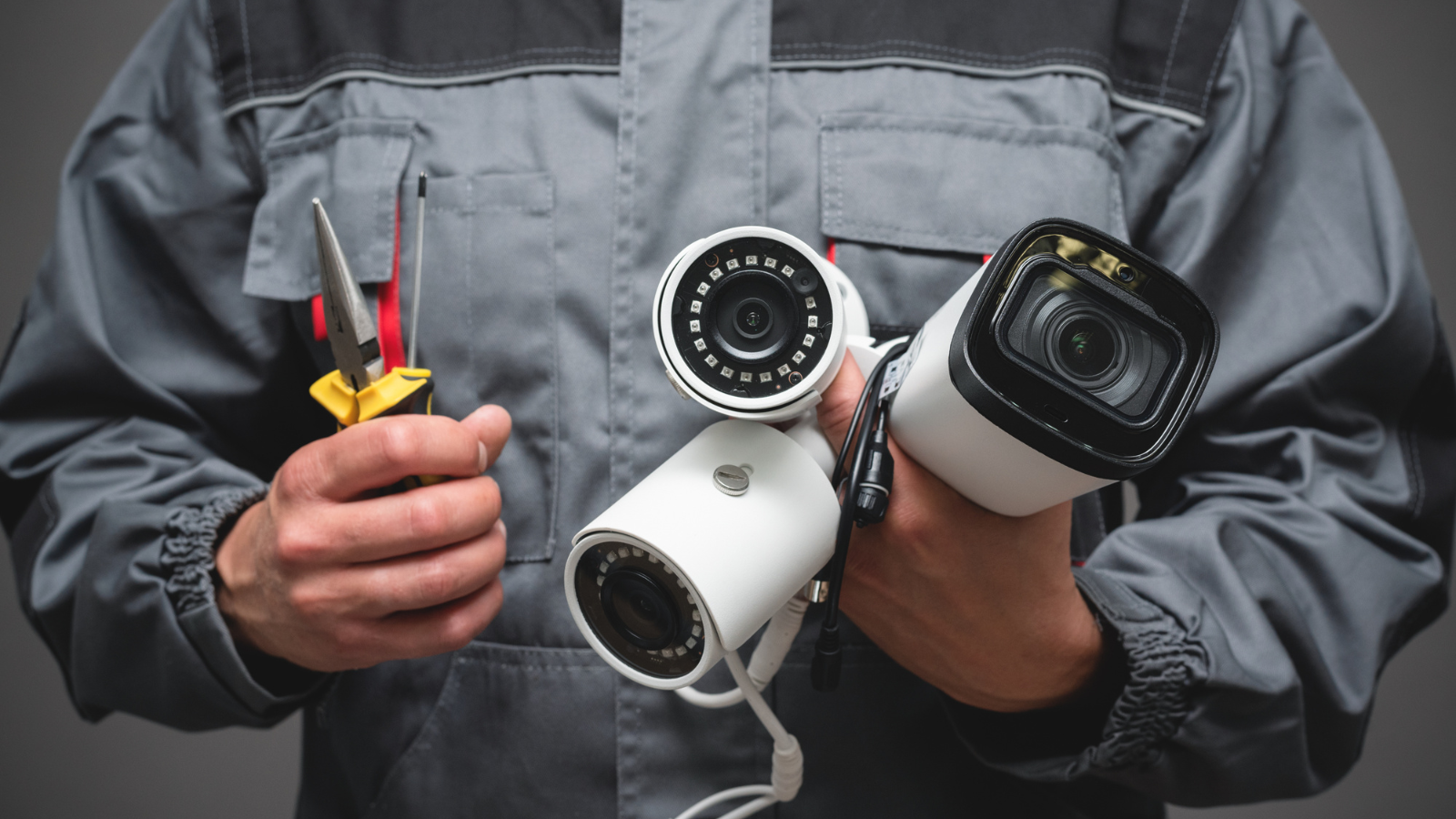Top digitization challenges, opportunities, and physical security trends for healthcare in 2023.
Table of Contents
- Digitization is driving physical security innovation
- Physical security challenges for healthcare facilities
- Digitization opportunities for healthcare facilities
- Digitization opportunities in physical security
- Healthcare security systems with SiteOwl
In 2022, hospitals, long-term care clinics, and other healthcare facilities faced numerous security challenges ranging from workplace violence to data breaches. On the physical front, a survey revealed that most healthcare workers have experienced or been affected by workplace violence. Additionally, in the first half of 2022, healthcare data breaches were linked to over 19 million records, and the statistics are going up.
Fortunately, healthcare executives and security professionals can leverage the power of cloud-based technologies and embrace digital transformation to improve workplace safety and security through enhanced physical security system management.
In this article, we’ll share the top challenges, opportunities, and trends when it comes to digitally transforming the delivery and management of a healthcare facility’s physical security infrastructure in 2023 and beyond.
Digitization is driving physical security innovation
The conversion of analog information to digital is referred to as digitization. Physical security teams can gain a lot from implementing a digitalization strategy, but adoption in the healthcare sector has been hampered by industrial complexity and a lack of adequate digital tools.
Healthcare executives and security professionals demand modern standards of visibility and control for their physical security devices to maintain a robust physical security program. Digitization offers an opportunity to utilize innovative technology to streamline physical security systems operations.
Physical security challenges for healthcare facilities
With an uptick in workplace violence against healthcare workers, healthcare organizations must strengthen their physical security posture to protect employees. The most crucial physical security devices for hospitals are touchless access control, surveillance solutions, patient room video/audio integration, thermal cameras, and AI video analytics to manage occupancy, loitering, mask compliance, etc.
Attempts to manually manage deployed physical security devices bring to light various challenges, including device status, compliance, and lifecycle management issues. Cloud-based lifecycle management platforms enable organizations to digitally transform their physical security systems while addressing key digitization challenges.
The challenge for most healthcare facilities is balancing maintaining a strong security posture and remaining welcoming simultaneously. In an interconnected world, healthcare facilities require many physical security devices and sensors to operate a robust security program efficiently. A standard healthcare facility that prioritizes security may have some or most of these physical security technologies and systems in place:
- Access control
- Video surveillance
- Monitoring Platform
- Network audio
- Weapons detection systems
Once the devices are installed, the security team is fully responsible for managing these devices, often using legacy tools designed for the physical world. In addition, the team must monitor and control the numerous upgrades, adjustments, and other lifecycle issues that arise over time. The amount of manual labor is staggering for even the most efficient security department.
With so many factors to consider, it’s understandable that 89% of security leaders in a Microsoft-Accenture survey said that while digitization was important, just 30% of them thought it was urgent. But with all the signs pointing to a world that is increasingly digital, security officials will need to embrace digitization if they want to succeed in 2023 and beyond.
Digitization opportunities for healthcare facilities
Digitization provides healthcare security leaders an excellent opportunity to reimagine how they manage their physical security systems. Top benefits of adopting a digital model include improved: operational efficiency (40%), customer expectations (35%), and time efficiency (50%)
Resisting the digital trend or adopting a business-as-usual attitude will only increase risks and prevent healthcare facilities from capitalizing on valuable digitization opportunities, including:
- faster access to information
- increased productivity
- lower operational costs
- improved decision-making
- automation of processes
- agility, and disaster recovery
The future is here and by embracing digitization, healthcare organizations can improve patient safety and staff productivity through enhanced security system management.
Additionally, digitization enables healthcare organizations to leverage technology and strengthen their physical security posture with some of the benefits below.
Data-driven decision making
The world is more data-driven than ever! To improve results and streamline operations, organizations are investing in automation and prioritizing ways to foster connectivity between internal and external systems. This requires real-time data processing from across the enterprise to make informed and scalable decisions.
Scalable security system practices
Security leaders need scalable solutions to manage the many physical security devices and sensors such as surveillance cameras, access controls, and alarm system throughout the organization.
Upgrading legacy systems
Legacy system modernization is vital to any enterprise’s IT and security strategy. Historically, the security industry has been dominated by legacy security systems, but with the rise of cloud and IoT, the security landscape is changing rapidly. To meet this new environment and reduce costs, it is important to look for a solution that enables financial institutions to transform their security infrastructure.
Reduce Total Cost Of Ownership
Digitization presents new opportunities for healthcare organizations to standardize and optimize their security infrastructure. It also provides sustainable ways for organizations to lower maintenance costs, increase efficiency, and address critical lifecycle management issues
Digitization opportunities in physical security.
Healthcare physical security trends
It is more important for healthcare institutions to ensure the safety of medical personnel, patients, records, equipment, and facilities. As healthcare facilities review and upgrade their physical security systems, here are just a few trends that will continue to drive digitization.
Cyber-Physical security convergence
Siloed teams can create healthcare physical security blind spots. In 2023, the cyber-physical convergence will only accelerate as organizations seek to eliminate the silos currently preventing these two indispensable departments from being on the same page.
Cloud adoption acceleration
Cloud adoption in healthcare has steadily increased in recent years. Cloud adoption among enterprise organizations is already over 94%. By 2023, 31% of organizations expect to run 75% of their workloads in the cloud. Additionally, 27% of them plan to run at least 50% of their business processes in the cloud by then.
AI-enabled video analytics
Integrated video surveillance for hospitals is necessary to balance patient accessibility with safeguards. In addition, AI-enabled video analytics offer significant value to healthcare facilities and in 2023 we’ll see even more video surveillance innovation, including the ability to analyze data and draw out insights far more quickly than would ever be possible manually, and high-resolution cameras that can observe and analyze a wider-than-ever field of view.
Lifecycle management
It’s estimated that by By 2023, 90% of global businesses will have contract lifecycle management solutions implemented. Lifecycle management platforms enable security professionals to manage their system planning, design, installation, and service from one centralized location while providing system-wide visibility. Often, these platforms also have reporting capabilities that help security professionals to plan security investments.
With SiteOwl, healthcare organizations can manage the information behind every element of your access control, video surveillance, and intrusion detection systems — all from a single location.
Healthcare Security Systems With SiteOwl
Healthcare executives and security professionals know firsthand that even an isolated security incident could devastate their organization, staff, and community. In this environment, they must leverage technology and get the most out of their security investments.
By leveraging technology to generate greater insights, physical security will also be able to do more with less, improving operational efficiency and reducing expenses by 30-50%.
Lifecycle management is a top priority for healthcare security leaders that want to digitize their physical security systems. SiteOwl is leading the digital transformation in the physical security industry by helping organizations harness the power of cloud computing and automation to address evolving healthcare security needs.
Request a demo today!

Su Subburaj
Su is SiteOwl's CMO and leads all marketing and communications. Su has extensive strategy and management consulting experience and previously consulted for 3Sixty Integrated where she gained an in-depth understanding of digital transformation challenges in the physical security industry. When not working on strategies to expand SiteOwl's footprint, Su enjoys bad karaoke, weightlifting and traveling.




